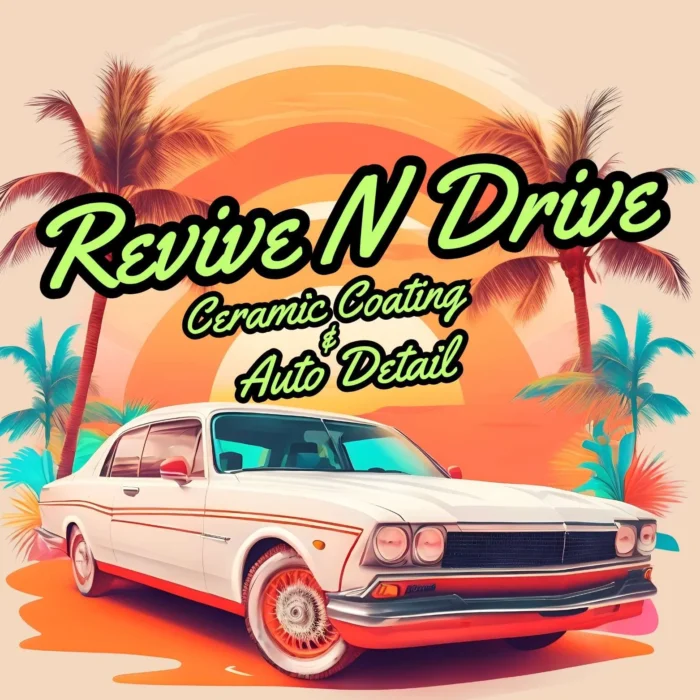Is your paint starting to lose its shine, looking dull or chalky? Chances are, oxidation has taken its toll, leaving your surfaces less vibrant than before. Oxidation occurs when paint is exposed to the elements, especially sun and moisture, leading to a breakdown of the paint layer and resulting in that tired, faded appearance.
Fear not, though! Restoring the lustrous finish is entirely doable, and with the right know-how, you can bring those oxidized surfaces back to life. Whether it’s the car you drive or outdoor furniture in your garden, understanding the steps to effectively remove oxidation is key.
In this guide, we’ll dive into practical methods to identify oxidation and remove it efficiently. You’ll learn the best tools and products to use, along with some helpful tips to prevent future oxidation so that your paint stays vibrant and eye-catching. Get ready to transform dull, oxidized surfaces back to their original brilliance!
Understanding Oxidation in Car Paint
Have you ever noticed hazy patches on your car’s surface that seem to rob your vehicle of its gloss and shine? This is a telltale sign of oxidation creeping in. Oxidation occurs when your paint is exposed to oxygen over time, especially under harsh environmental conditions, causing the paint to gradually break down.
The Science Behind It
At a microscopic level, the paint’s protective oils evaporate due to constant exposure to UV rays and heat, and moisture penetrates the paint layer. This combination speeds up the oxidation process, which initially appears as faded or chalky patches.
Early Detection is Key
Catching oxidation early can save you a lot of hassle. Run your fingers across the paint—if it feels rough or looks matte, oxidation might be the culprit. Regularly inspecting your car for these signs can help you intervene before it gets severe.
By understanding the underlying causes and signs, you can treat and prevent oxidation effectively. In the following sections, we’ll explore how you can tackle oxidation and restore your car’s paint to its former glory with simple yet effective methods.
Types of Oxidation and Their Effects
When it comes to oxidation, not all are created equal. Understanding the different types can help you assess the severity and decide on the best solution for restoration.
Mild oxidation is the starting phase, often manifesting as a subtle fading in the paint’s color. You might not notice it immediately, but if left unchecked, mild oxidation can progress quickly. This stage can usually be addressed with simple polishing.
Moderate oxidation is more apparent, giving the surface a chalky appearance. At this stage, the damage has increased, and routine cleaning won’t be enough. You’ll likely need to step up to more intensive restoration methods, such as using a cutting compound.
Severe oxidation is the most challenging, and at this point, the paint surface feels rough to touch, and the color is significantly faded. This extensive damage might mean a need for repainting, especially if the underlying metal has started to corrode.
Recognizing these stages early can lead to quicker, more effective intervention, preserving the vibrancy of your car’s paint and preventing costly repairs. In the next sections, we’ll delve into practical steps to tackle these types of oxidation.
Effective Techniques for Removing Oxidation
Taking the right approach to remove oxidation can make all the difference. Depending on the severity, there are a few tried-and-true methods to get your paint looking its best again.
For mild oxidation, start with a thorough wash using a gentle car shampoo, which helps remove surface dirt and particles. Follow this up with a clay bar treatment. Clay bars are excellent at lifting contaminants from the surface, setting the stage for polishing.
If you’re dealing with moderate oxidation, polishing compounds are your best bet. These abrasives work to remove the oxidized layer, revealing fresh paint beneath. Use a dual-action polisher to evenly apply the compound and avoid damaging the paint.
Severe oxidation might require a more intensive approach. A cutting compound can help remove deep oxidation, but it requires careful application to avoid further damaging the paint. Take your time, and consider tackling a small area first to perfect your technique.
Finally, regardless of the method, always finish with a good quality wax or sealant. This step adds a protective layer to your paint, helping to prevent future oxidation and keeping your surfaces gleaming longer. In the next section, we’ll uncover how regular maintenance can prevent this issue from recurring.
Choosing the Right Products for Paint Restoration
The market is flooded with various products for paint restoration, and finding the perfect fit can seem daunting. However, choosing the right product is crucial for achieving a professional-quality finish.
Understanding Product Labels
When selecting a product, pay attention to the labels. Look for terms like “oxidation remover” or “restoration compound.” These indicate that the product is formulated specifically to tackle oxidation without harming the paint beneath.
For mild cases, a high-quality polish or cleaner wax often does the trick. These products generally contain mild abrasives and can remove light oxidation while enhancing gloss.
If the oxidation is moderate, opt for a dedicated rubbing compound. These compounds are slightly more abrasive and can tackle tougher oxidation, but should still be used gently to preserve the paintwork.
For severe damage, a heavy-duty cutting compound may be necessary. Although highly effective, these should be the last resort as they can remove a significant amount of paint if used improperly.
Trustworthy Brands
Brand reputation can be a helpful guide. Established brands often invest in research, ensuring their products are both effective and safe. Checking reviews and asking for recommendations can also lead you to top-performing products.
Remember, investing in the right products will save you time and effort while ensuring the best possible results. In the next section, we’ll explore preventative measures to keep your paint in pristine shape.
Preventing Oxidation in the Future
Once you’ve restored your paint’s original glory, preventing future oxidation is key to maintaining that fresh, vibrant look. A little effort in maintenance can go a long way.
Start with regular washing. Keeping your car free from dirt, pollutants, and road salt minimizes the risk of oxidation. Aim to wash it every two weeks using a pH-balanced car shampoo for the best results.
Waxing is another essential step. Applying a high-quality wax every few months forms a protective barrier against harmful UV rays and environmental elements. Not only does this add a beautiful shine, but it also helps preserve the paintwork over the long term.
Parking your vehicle in a garage or using a car cover also provides an added layer of protection against the harsh effects of sun, rain, and dust. If that’s not an option, try to find shaded parking whenever possible to reduce sun exposure.
Finally, regular inspections are key. Keep an eye out for early signs of oxidation, such as dull spots or rough textures, and address them immediately. By staying proactive, you’ll keep oxidation at bay and your paint looking pristine for years to come.
Conclusion: Achieving Long-lasting Paint Protection
With the right knowledge and a touch of effort, keeping your paint looking flawless becomes an achievable goal. Oxidation might seem daunting, but as we’ve explored, it’s entirely within your power to tackle and prevent it.
By understanding the signs of oxidation, you can act swiftly before minor issues escalate. From selecting the appropriate products to applying effective techniques, every step you take strengthens your paintwork’s defense against wear and tear. And let’s not forget, regular maintenance means fewer visits to the auto body shop and more time enjoying that stunning shine.
Equally important is prevention. Simple habits like frequent washing, waxing, and mindful parking locations drastically reduce oxidation risks. These preventive measures not only save you time and energy but also contribute to your vehicle’s overall health and longevity.
Another key point is, by incorporating these practices into your regular routine, you’re investing in the long-term appearance and resale value of your car. Achieving that fresh-from-the-showroom look doesn’t have to be difficult; it just requires consistency and care.
In closing, armed with these insights, you’re well-prepared to keep oxidation at bay. With each preventative step and every maintenance task, you’re ensuring that your paint not only looks great today but remains resilient and vibrant for miles to come. Now, go on and enjoy that mirror-like finish, knowing you’ve got it all under control!




